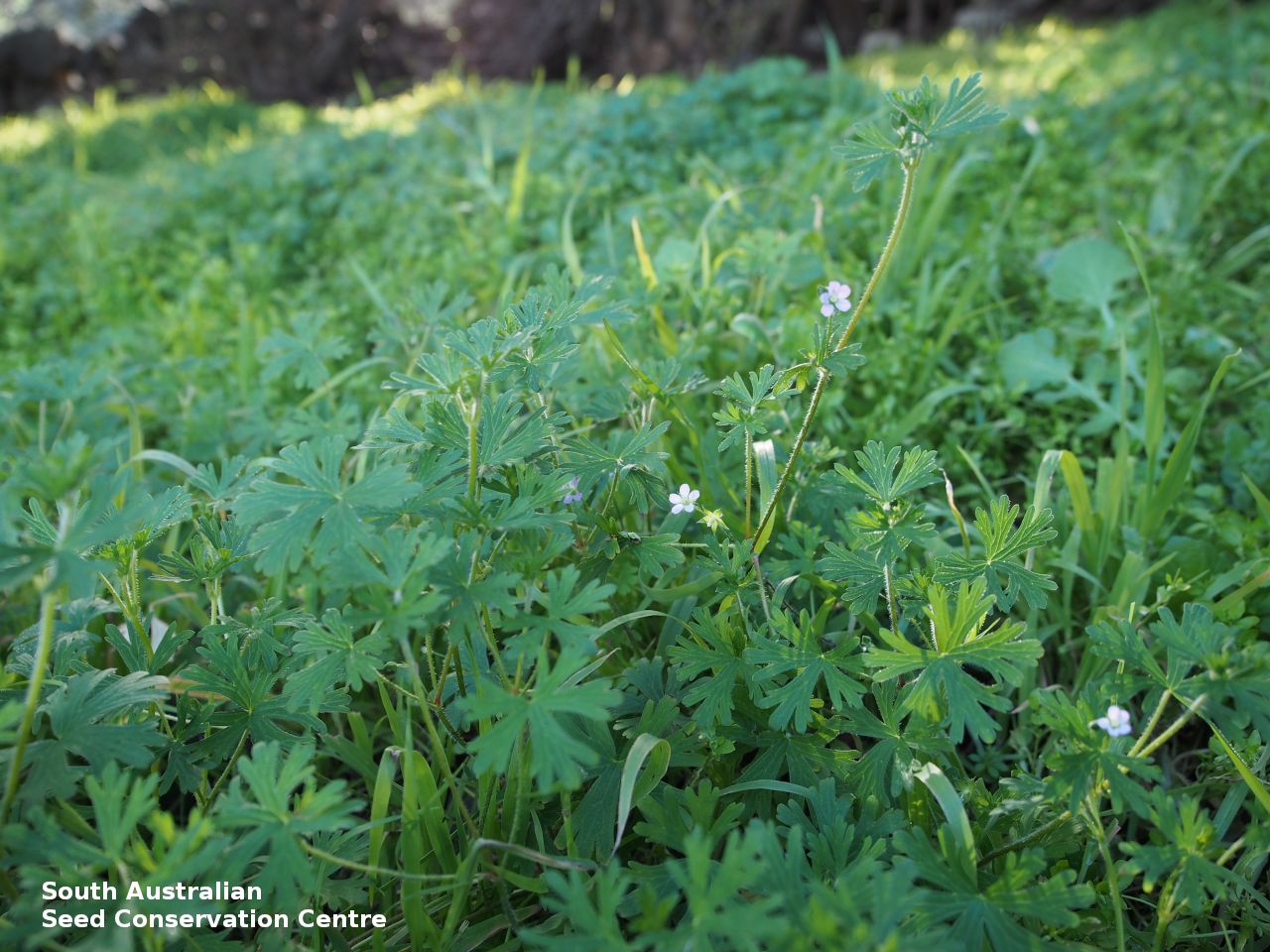
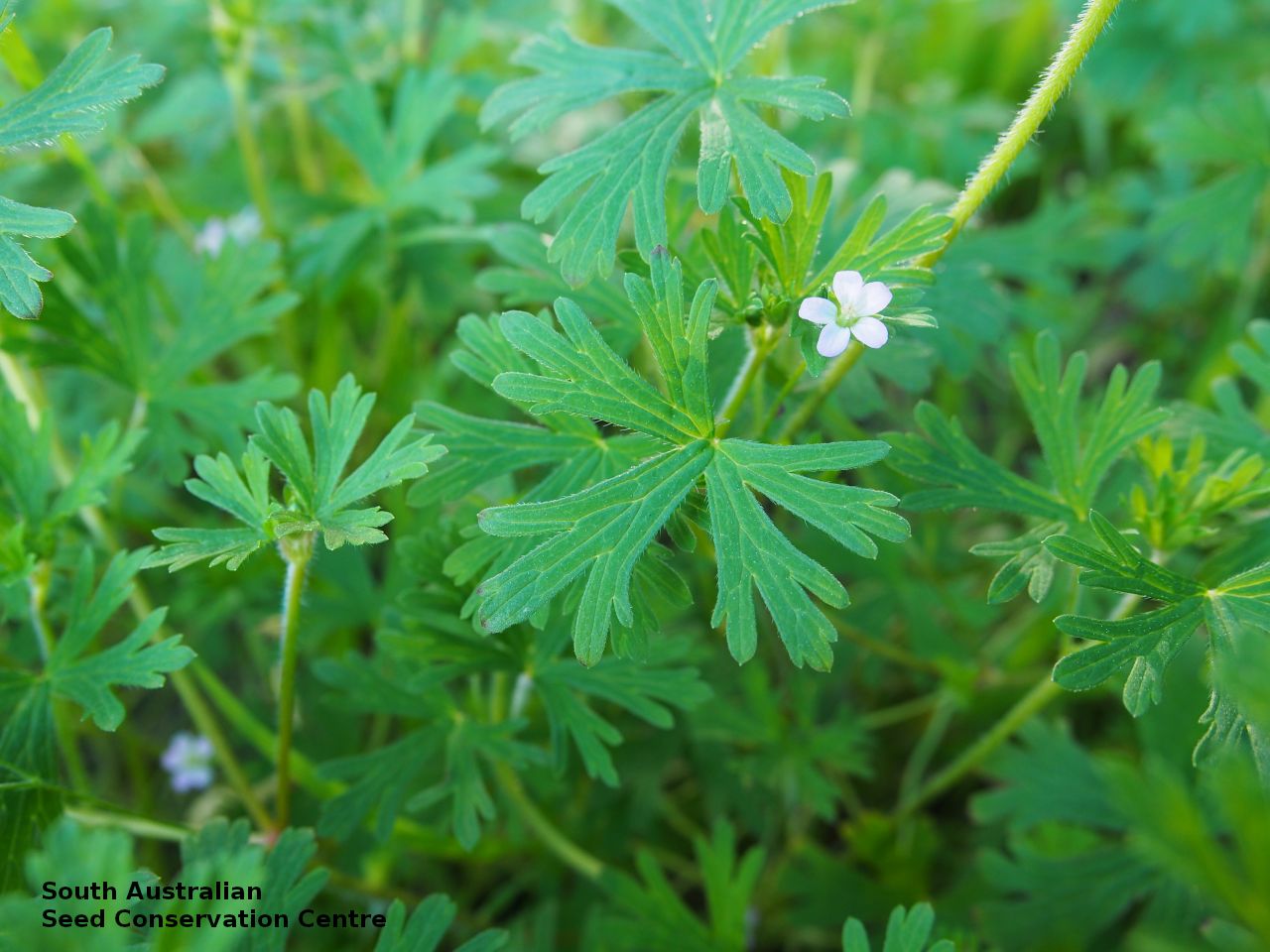
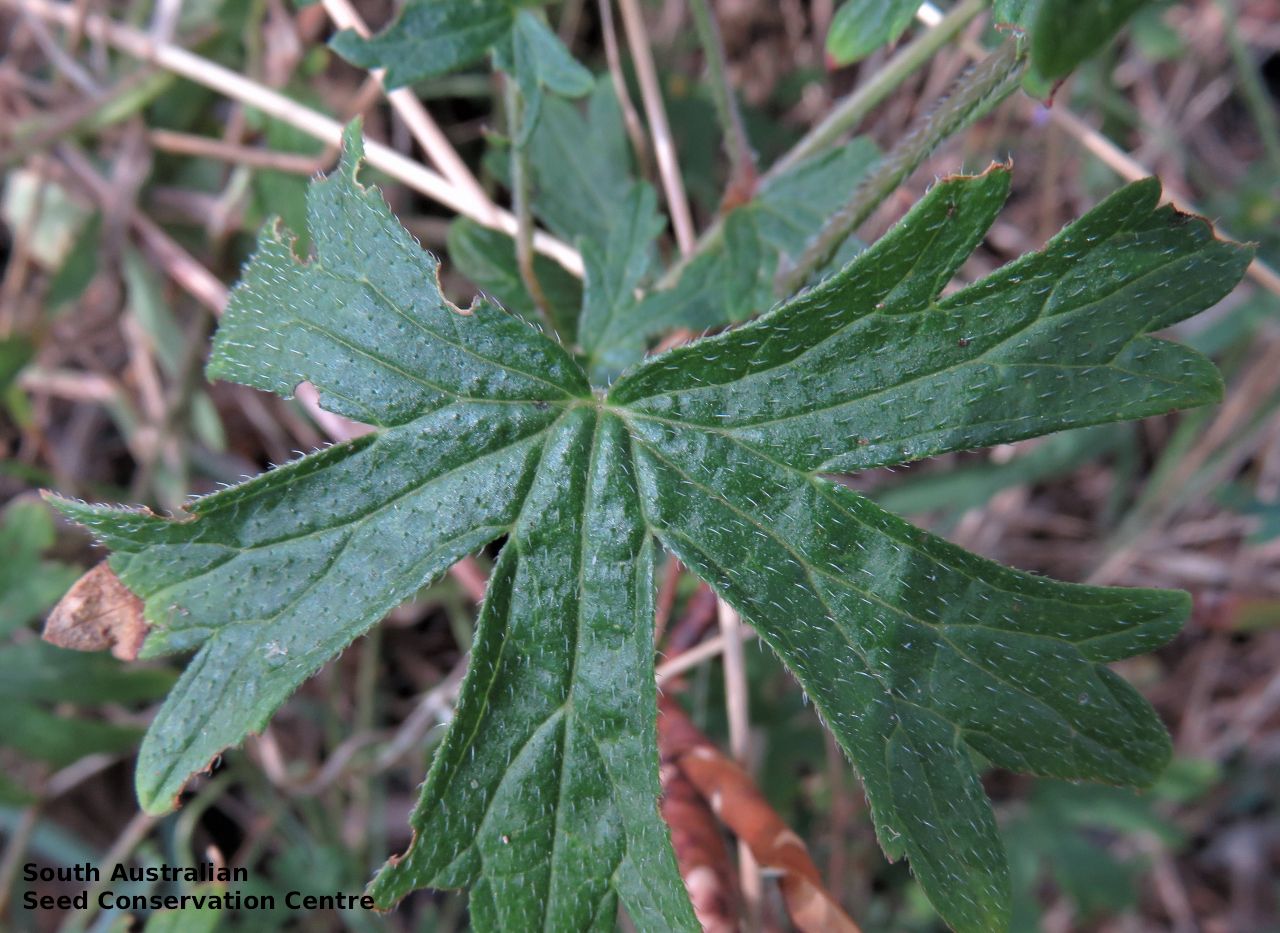
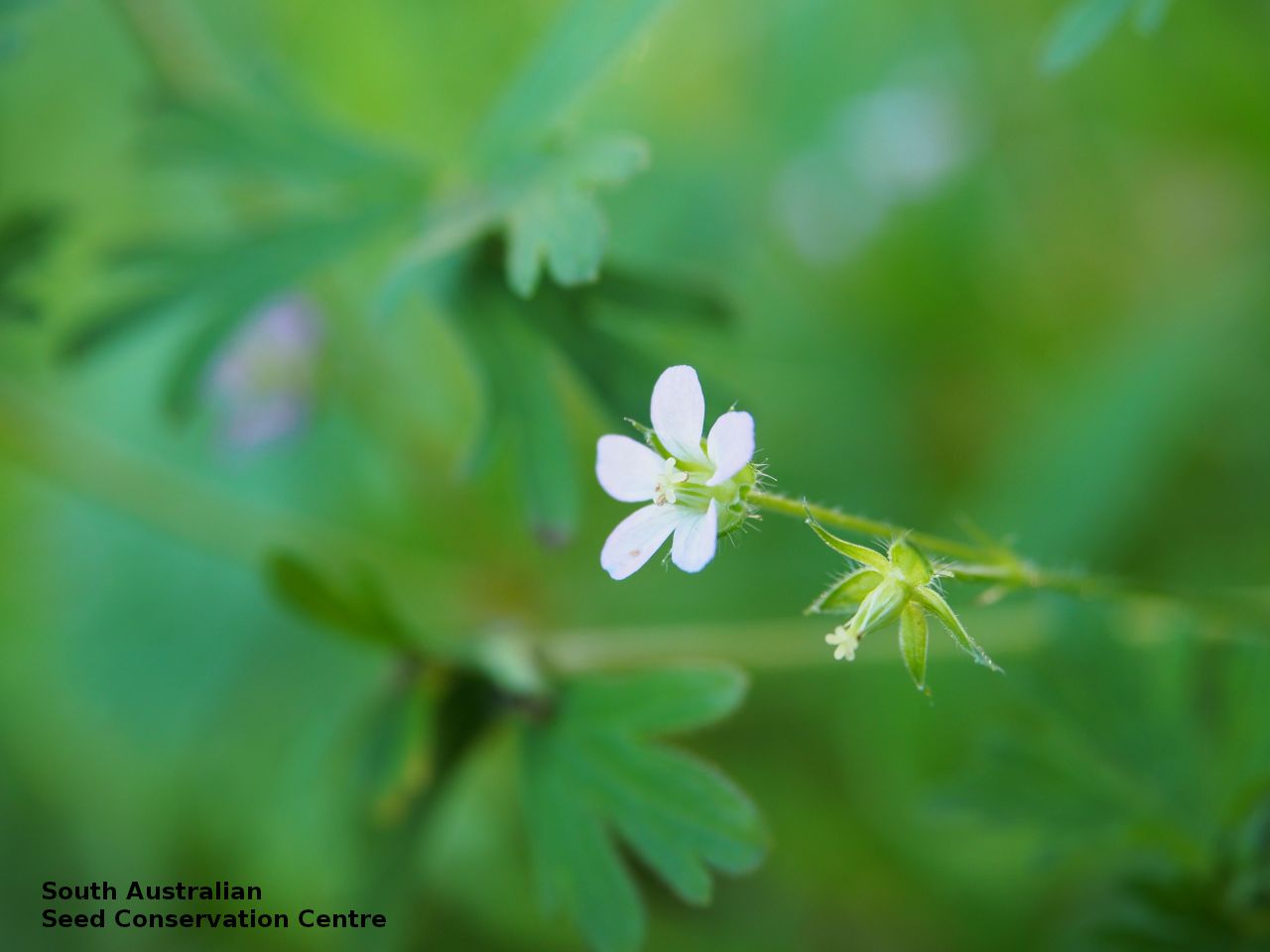


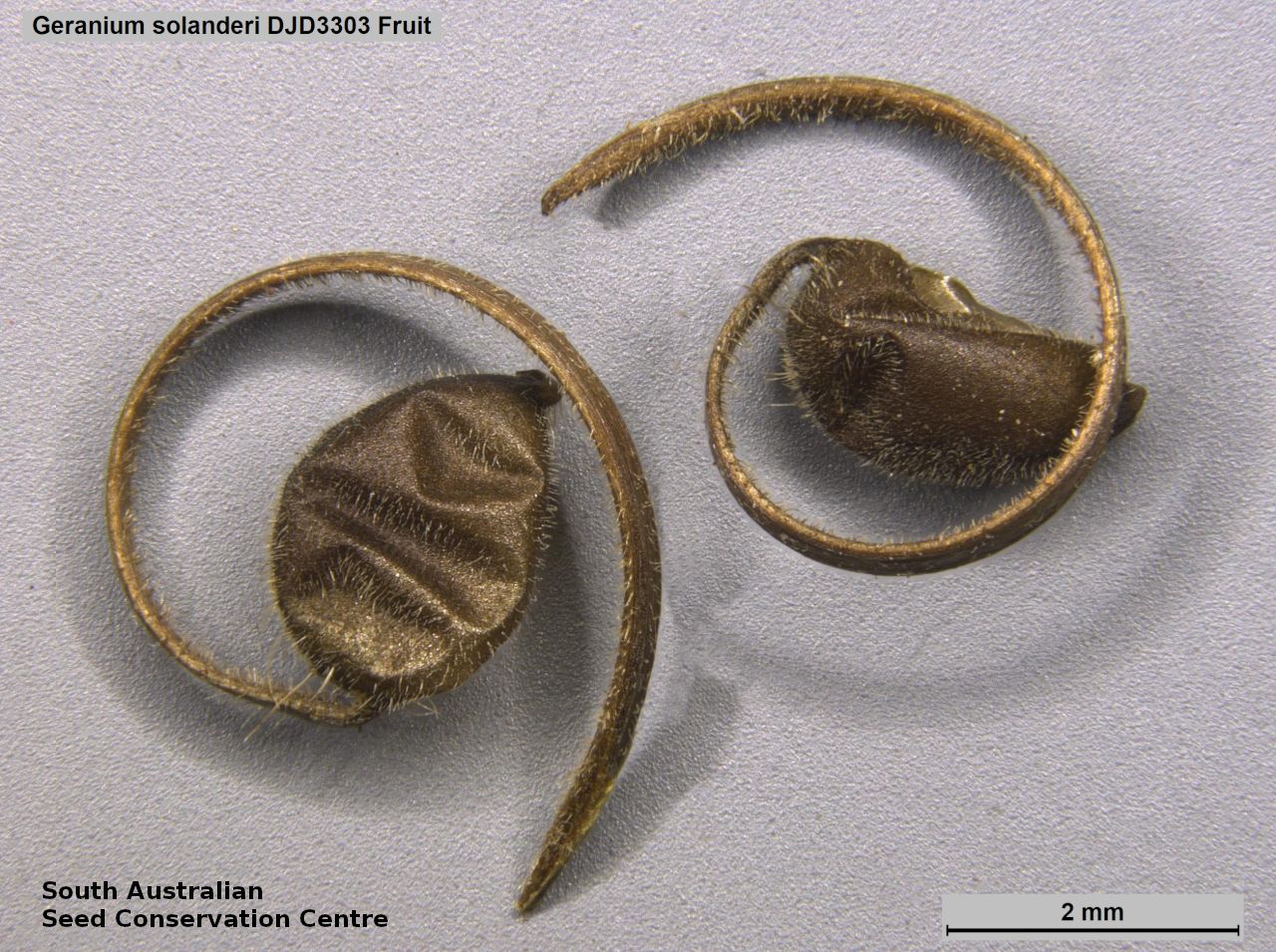

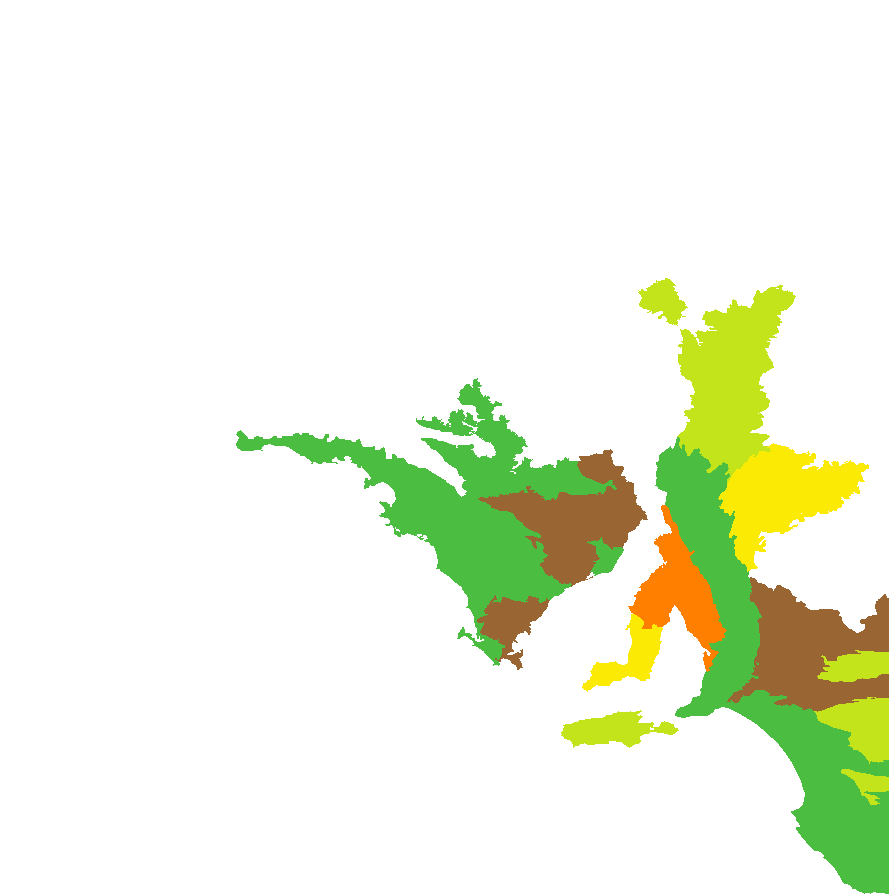
Botanical art
Prior names
Geranium sp. Linear segments (K.Preiss 128), partly
Geranium gardneri
Geranium sp. Pale pink flowers (M.Gray 5847)
Geranium solanderi var. solanderi
Geranium pilosum, nom.nud.
Geranium sp. 4
Geranium sp. 2
Geranium pilosum, nom.illeg., non Cav.(1788)
Geranium dissectum var. australe
Common names
Australian Crane's-bill
Austral Geranium
Etymology
Geranium from the Greek 'geranos' meaning a crane, alluding to the fruit resembling the head and beak of this bird. Solanderi named after Daniel Carlsson Solander (1733-1782), a Swedish-born naturalist, follower of Carl Linnaeus and explorer and plant collector on the Cook voyages.
Distribution and status
Found in southern South Australia growing in damp to dryish areas, usually sheltered sites in grassy woodlands, along drainage lines or in seepage areas. Also found in all States except in the Northern Territory. Native. Common in South Australia. Common in the other States.
Herbarium regions: Gairdner-Torrens, Flinders Ranges, Eastern, Eyre Peninsula, Northern Lofty, Murray, Yorke Peninsula, Southern Lofty, Kangaroo Island, South Eastern, Green Adelaide
NRM regions: Adelaide and Mount Lofty Ranges, Eyre Peninsula, Kangaroo Island, Northern and Yorke, South Australian Arid Lands, South Australian Murray-Darling Basin, South East
AVH map: SA distribution map (external link)
Plant description
Decumbent to ascending herbs with a swollen turnip-shaped tap root with stems to 60 cm long, covered with hairs. Leaves opposite, semi-orbicular to reniform in outline, to 3 cm long and 5 cm wide, with hairs on both surfaces, 5 to 7-lobed, each lobe deeply 5 to 7-toothed. Flowers usually paired pink petals. Flowering between August and December. Fruits are brown fruit to 15 mm long with 5 hairy mericarps. Seeds are brown globular and pitted seed with heagonal shaped cells on the surface.
Seed collection and propagation
Collect seeds between October and February. Collect mature fruit, that are turning brown and the mericarps are starting to curl and peeling off the fruit stalk. Place the mericarps in a tray and leave to dry fro 1 to 2 weeks. If only the mericarps are collected, no further cleaning is required and it can be stored as is. Alternatively, you can clean to seed by gently rubber the mericarps with a rubber bung, then use a sieve to separate unwanted material. Store the mericarps/seeds with a desiccant such as dried silica beads or dry rice, in an air tight container in a cool and dry place.